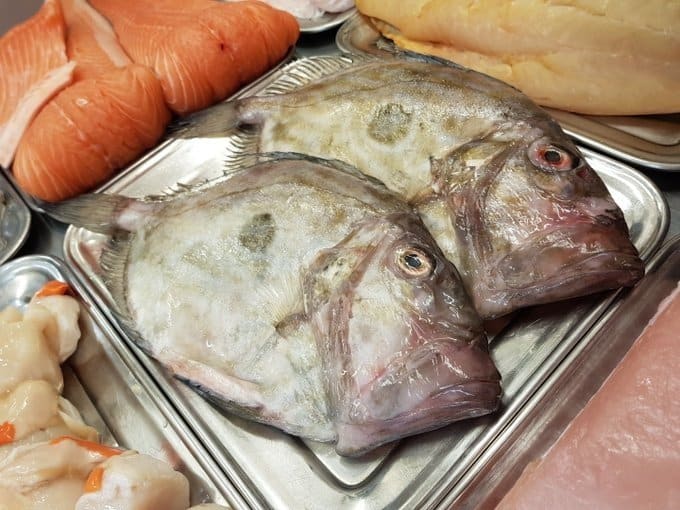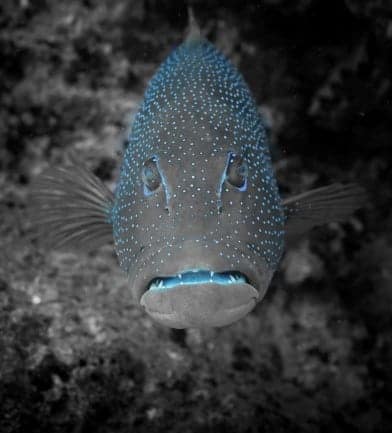Flounder vs Halibut – All You Need to Know
Avid anglers almost always have an internal competition going among the different “catch of the day” categories. This competition always goes something like this: which is better, red snapper or white snapper? How about largemouth bass vs smallmouth bass? You get the gist; the comparison is between the different types of fish that compare closely to one another and might even belong to the same family. Like flounder vs halibut!
Of course, the answers to these questions are always extremely subjective because everybody has their own preferred taste. However, when it comes to flounder vs halibut, the discussion gets a bit more interesting for one simple reason:
A halibut is a flounder, but it just so happens that not all flounder are halibut!
Stick around! Let’s take a quick explorative tour of this subject matter to find out the differences, what similarities exist, and how you can learn to tell them apart.
Flounder vs Halibut
First things first, halibut and flounder just so happen to be some of the tastiest fish in the sea. The name halibut comes from a Middle English word “halybutte,” which, when directly translated, is “holy flatfish” because halibut is very popular during Catholic holy days when beliefs are forbidden to eat mean. Halibut has quickly become a highly tasty substitute.
Technically speaking, these are both a type of flatfish that inhabit the bottom of the lakes and seas known as the “demersal zone.” They are both predatory fish that feed on almost every other kind of fish, sea animals, crustaceans…anything that can fit inside their mouth, which has cone-shaped teeth. They have been known to even feed on their own kind.
The main difference between a Halibut and a Flounder often comes down to about three things:
- Body shape
- Body size
- Shape of teeth
Let’s take a quick look at these main differences to help you learn how to easily differentiate between the two.
The Difference Between Halibut and Flounder Fish
Before we even go deeper into the main differences, you should know that the only true halibut out there are the Pacific and Atlantic halibut. These creatures have the potential to grow into a massive size, with some weighing in upwards of about 400 pounds. Flounder, on the other hand, don’t ever really get that big. Some of the biggest ever recorded are just over 30 pounds.
That being said, here are the other key differences between halibut and flounder fish:
Body Shape
Here is a video giving you a quick tutorial on how to fillet a halibut. It also gives you a sense of just how massive these fish can get and how much meat they have on them:
As you can see from the video, halibut tend to have a longer body with pointed anal and dorsal fins, giving this fish more of a diamond shape than anything else. This greatly differs from the body of a Flounder, which is more rounded than it is diamond-shaped. Another major difference is that Flounder fish have uniform smaller fins, which further accentuate the rounded body shape.
Here is a video showing you how to filet flounder as well as the general body shape of this fish:
Body Size

One of the most reliable indicators of which fish you caught has to be the sheer size. If you have a Pacific or Atlantic halibut on the hook, you will likely have a massive fish. These fish grow up to 400 pounds and have a lot of meat. Flounder, on the other hand, don’t grow quite as big. In fact, the usual flounder catch falls anywhere between 5 to 30 pounds.
The more you hang around fishing circles, the more likely you are to hear halibut being referred to as either a “barn door” or a “doormat.” This is mostly because they are so flat and so massive.
Shape of the Tail
Yet another major difference between these fish is the shape of the tail. Halibut tend to have a more forked tail that, more often than not, comes to a point at every end of the tail. Flounder, on the other hand, has no such features. Their tails tend to be more rounded.
Positioning of the Eyes
The weirdest thing about flatfish, such as flounder and halibut, is that they have both eyes on one side of their bodies. This happens as they grow. One eye tends to migrate slowly to one side of their head, leaving them with both eyes on the same side.
When it comes to halibut, the eyes will always be on the right side of the head. It’s very rare to find halibut that are left-eyed. In fact, only 1 in every 20,000 or so are left-eyed. Flounders, however, can go either way. You can find one that is right-sighted and another that is left-sighted, but the eyes will always be on one side of the head.
Where Can You Find Halibut and Flounder?
Most experienced anglers will tell you that the most likely places to find halibut is farther north that you would typically find other flounder species. This means that if you are angling for Pacific halibut, then you want to focus your fishing on the waters of the Western coast of Alaska down to the Northwestern U.S.
Some of the best locations to catch halibut are Homer or Seward Kenai. However, you can also find them more towards the southern waters of Central California, Vancouver Island, or Juneau.
The California halibut isn’t technically considered a real halibut but rather a subspecies that’s close enough to their Northern relatives.
If you are angling for Atlantic halibut, on the other hand, then you might want to concentrate on the waters around Cape Cod. They can also be easily found through to Greenland and in the waters around Northern Europe.
Angling for the Atlantic halibut, however, isn’t very popular. This is mostly because they are on the endangered species list.
Unlike halibut, flounder live pretty much everywhere from the Gulf of Maine to the Gulf of Mexico. They can be found all around the U.S Pacific Coast down to Mexico.
Flounder vs Halibut – Which One Tastes Better?
This is probably the real reason you are reading this guide at all. Now that you know the difference between halibut and flounder and where to find them, the next logical question would be which one tastes better, so you know which one to go for next time you head out to sea.
As you would expect, these two fish taste almost similar to one another, given that they are close relatives. There is, however, one main difference:
Halibut has more meat and a firm texture, while flounder is a little flaky and more delicate.
Furthermore, halibut tends to be less fatty than most fish. They just so happen to be some of the least fatty fish you can find in a fish market. Couple that with the fact that they have a lot of meat that is firm, and you have a fish that will do very well on the grill.
On the contrary, flounder is much fattier, and it doesn’t have such meaty fillets. Because these fillets are much thinner, the best way to cook flounder is to fry or bake it.
Always remember to go for fresh fish. If you are sure that it’s fresh or if you caught it yourself, then you should probably go for halibut. Meatier, less fatty, and grills very well. However, if you are on the East Coast, you might want to stick to flounder simply because you can be sure it wasn’t flown in from Alaska and is, therefore, more likely to be fresh.
Benefits of Eating Halibut and Flounder
Halibut and flounder, like many different types of fish, fall under the “superfoods” category. This is mostly because they offer you an incredible amount of nutrients and health benefits every time you eat some. Let’s take a quick look at some benefits of eating either halibut or flounder as often as you can.
Read: Best Fish Fillet Knives

Mega-Rich in Micronutrients
There are some nutrients that, although our body needs, it doesn’t need that much of to thrive. That is not to say that these nutrients are essential. Something like Selenium is a micronutrient that not only helps with our reproductive health but also goes a long way in maintaining our body’s overall health. By just eating about 160 grams of halibut, you will get all the Selenium your body needs. There are also many other helpful micronutrients that halibut has:
- Niacin
- Vitamin B12
- Magnesium
- Vitamin B6
- Phosphorus
All of these are good for your body in one way or the other.
These Fish Offer High-Quality Protein
A complete protein contains all the amino acids your body needs, but it can’t make it on its own. That is exactly what is contained in one serving of halibut: 42 grams of complete protein.
Not only is this excellent for your health and nutrition, but it goes a long way to help out your metabolic functions as well. Complete proteins help rebuild your body and repair muscles, which makes halibut a good nutritional addition for extremely physically active people such as athletes.
It Improves Your Heart Health
Heart disease is one of the leading medical problems and causes of death for both women and men. Thankfully, there is an easier way to fight this and minimize your chances of developing heart disease: eat more fish like halibut and flounder.
The micronutrients such as niacin, Omega-3 fatty acids, Magnesium, and Selenium found in halibut do wonders for the health of your heart. They protect your heart by increasing the amount of good cholesterol and reducing triglycerides. They also help lower your blood pressure as well as reduce your chances of developing blood clots.
There are a host of other health benefits that come with eating flatfish, including:
- Boost brain health
- Reduce inflammation
- Improve cell health
- Help with digestion
- Increase the health of your liver
- Reduce your risk of breast cancer
Fishing Tips for Catching Halibut and Flounder
If you are convinced and have decided to try catching either halibut or flounder (halibut would make more of a statement to your skills as an angler considering how big they can get). Here are some useful fishing tips that will help increase your chances of success when angling for halibut or flounder:
You Can Catch Halibut Surf Fishing
While the common course of action to take when angling for halibut is to get on a Chartered trip or a fishing boat and head out to see, these aren’t the only options. You can actually catch Halibut surf fishing. Some anglers would argue that this is by far one of the best and more relaxing ways to do so.
To Catch Halibut, You Will Need To Use:
- A circle hook for the bait: Using a J-hook isn’t the best way to catch halibut because they tend to bite slowly, making it difficult to get a good hookset from the start. Circle hooks are the perfect workaround for that problem.
- Lead Weight: Depending on where you are fishing, you will need a lead weight because halibut are bottom feeders, and you will need your hook and bait to get down there to attract the strikes.
- Swimbaits or fresh shrimp: As mentioned earlier, halibut eat pretty much everything in their path, and one of the best ways to catch them is to use fresh shrimp as bait.
Once you have all your gear ready, all you have to do is go where the fish are most likely to be. This includes:
- Jetties
- Riverbed entrances
- Estuaries
- Open beaches
Even though the commercially agreed months for catching halibut are from mid-May through to mid-September, you can actually catch Halibut and Flounder all year round if you go surf fishing in warmer waters.
So, which is better when it comes to flounder vs halibut? It all depends on personal taste. However, most anglers often want to go for trophy catches, and for that, halibut is better. They are bigger and more impressive.
Categories: Fishing












